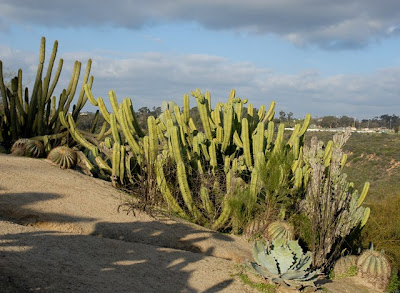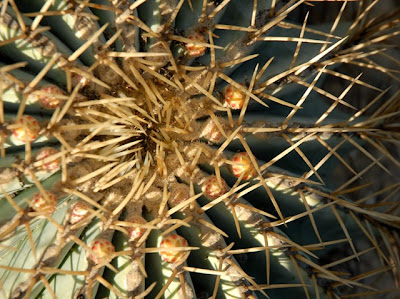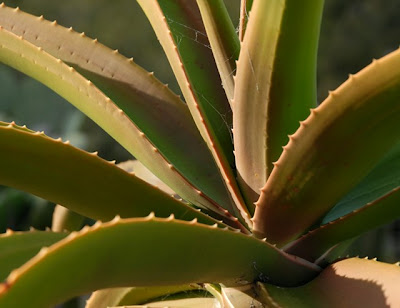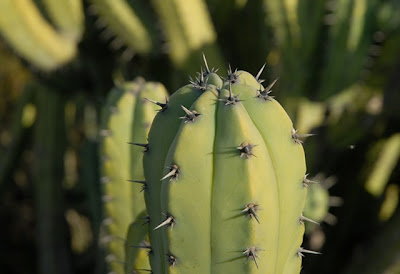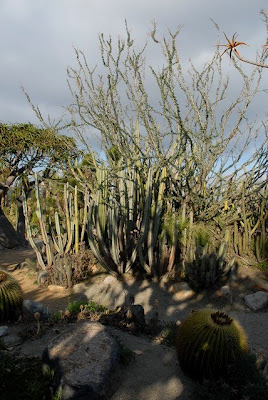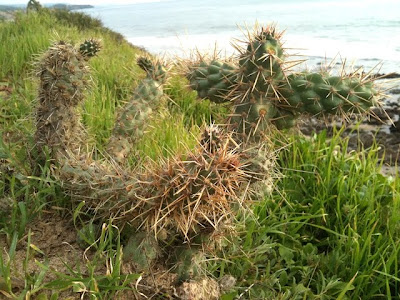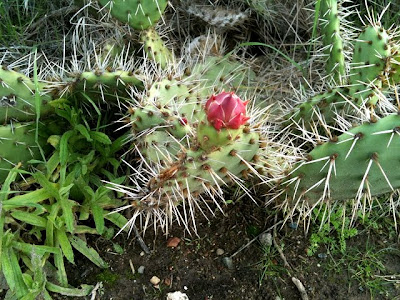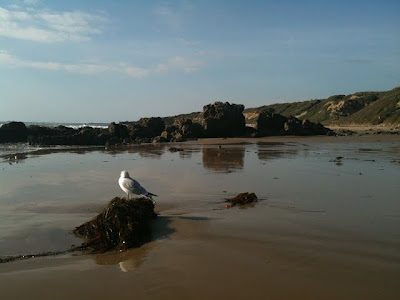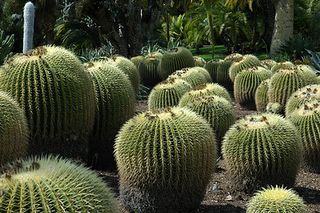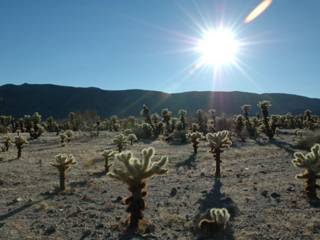Unfortunately I’m not that well versed in the non-cactus flora of the Mojave and Colorado deserts so I’m afraid I don’t know the names of most of the plants featured in this post. If you have more details I would appreciate a comment.
Unknown blue flower in habitat
I was especially fascinated by this small plant growing in the lower Colorado portion of the Joshua Tree National Park. I visited too early in the spring to experience a full blooming desert but this guy was flashing its bright blue flower, standing out among all the earth tones amidst a wash crossing the trail from Cottonwood Spring to Lost Palm Oasis. I studied the plant and its surroundings for a while, intrigued by the habitat it had chosen to grow in - it would for certain be washed away by torrents of water during the next flash flood.
Unknown yellow flower
Another interesting plant displayed this beautiful yellow flower that looks like it might belong to the Fabaceae (Leguminosae) family but I’m not certain.
Unknown yellow flower in habitat
The yellow flowered plant had found a much more secure habitat, growing safely among the boulders in the rock-enclosed Hidden Valley (rumored to have been used by cattle rustlers in the past).
Nolina parryii in habitat
One species I’m pretty sure of is Nolina parrayii (Parry's Nolina or Giant Nolina) that has long thin leaves (and is sometimes called beargrass). It seems to be especially abundant in the lower Colorado portion of the park but also grows in some of the higher Mojave parts like e.g. the aforementioned Hidden Valley.
Nolina parryii seeds
Its tall flower stalk is said to be edible after being baked, with a somewhat bitter taste. Alas, no fresh flower stalks were to be found at the end of February and I didn’t want to try the old dry ones out for taste ;-)
In order to be better prepared I plan to buy the following desert flora books before my next visit to Joshua Tree National Park: Sonoran Desert Wildflowers












